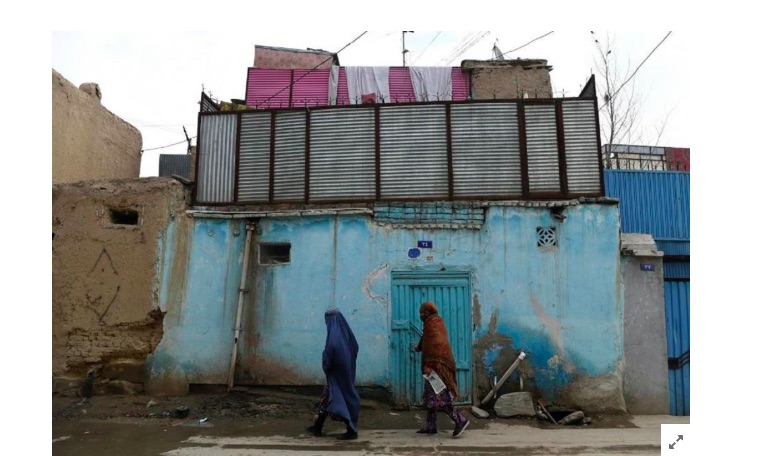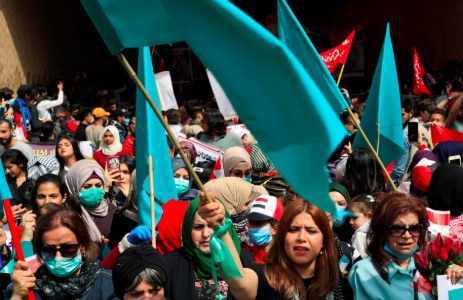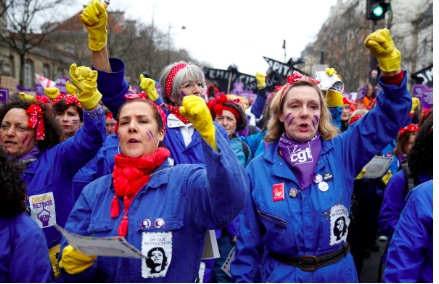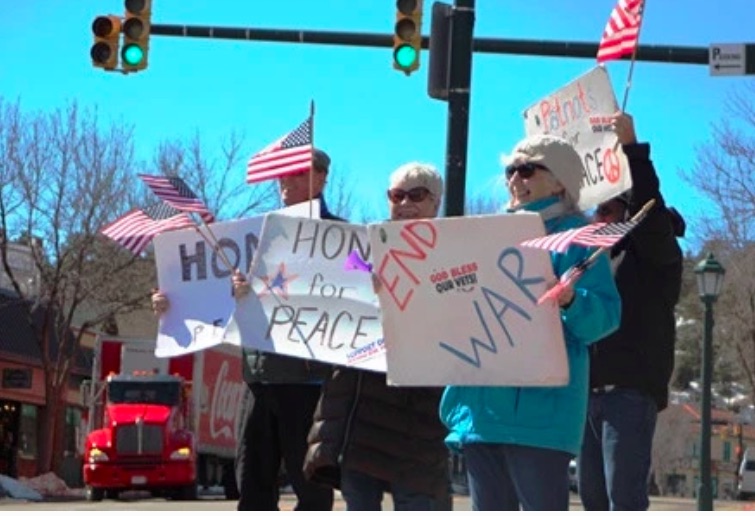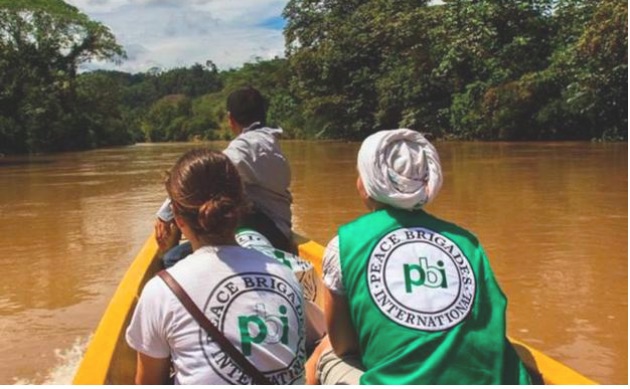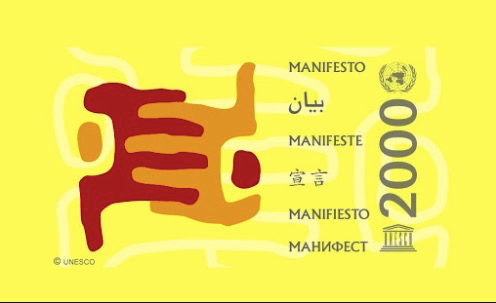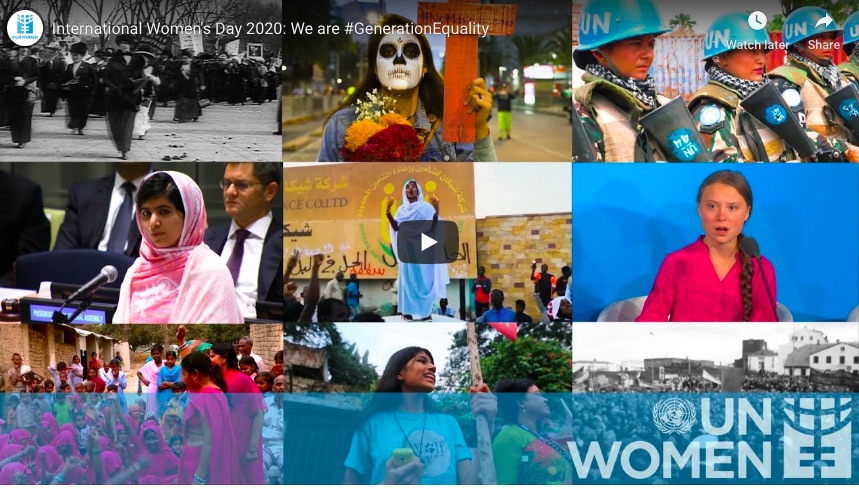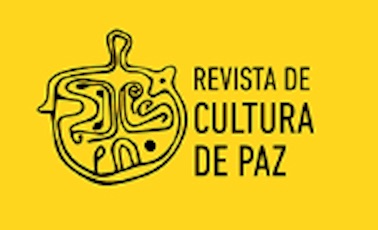. . WOMEN’S EQUALITY . .
An article by Cecilia González in RT.com (Russian television) (translation by CPNN)
Echoing the cry, ‘A day without us’, millions of Mexicans participated Monday March 9 in the National Women’s strike sparked by the wave of outrage over femicides and expanded to a long list of demands of the feminist agenda.

Video about the demonstration on International Women’s Day, Mexico City, March 8, 2020. Photo: Gustavo Graf / Reuters
Following the massive march on Sunday, in commemoration of International Women’s Day, public and private workers were called to leave offices, banks, supermarkets, restaurants, coffee shops, newspapers, shops and all kinds of work centers. The women who joined will also not perform domestic tasks to make their weight visible in the economy and society and to denounce the multiple aspects of gender violence.
A survey published last week by the newspaper El Financiero revealed that the strike had the support of 67% nationwide and that 57% of women intended to join it, demonstrating the progress of the feminist revolution that is now worldwide and that is writing a separate chapter here in Mexico.
In Mexico, 51% of the population and 52% of the voters are women. And they vote more than men. According to official data, in the 2018 presidential elections, which Andrés Manuel López Obrador won, 66.2% of the voters were women.
10 women killed every day
But inequality persists. A study by the International Observatory of Worthy Wages and the National Minimum Wages Commission estimates that Mexicans do work on a daily basis worth around 3,000 million dollars, but only one third of this is paid.
According to the Observatory of Decent Work of the organization Citizen Action Against Poverty, in the country men earn 16% more than women. The wage gap widens to 30% in the public sector.
Inequality is repeated in other areas. Data from the National Council for the Evaluation of Social Development Policy indicate that there are more women than men in poverty: 27.3 million versus 25 million.
Reports of the Reinserta organization, meanwhile, conclude that the courts impose an average of five years imprisonment more on the Mexican women than on the men.
Violence is rampant. Last year, there were 51,146 complaints of sexual violence against women in the country, an increase of 19.1% compared to 2018. The trend continues to rise. Also in 2019, in Mexico 10 women are killed every day. Three years ago, the average was seven women killed.
That is why femicides became this year’s central theme of public conversation in Mexico and had a full impact on President López Obrador’s political agenda.
The National Women’s strike began to germinate in social networks following the shocking murders of Ingrid Escamilla, a 25-year-old girl who died stabbed and skinned, and Fatima, a seven-year-old girl who was found lying in a bag, with signs of torture.
(article continued in right column)
(Click here for the original article in Spanish or click here for a translation to French)
Protecting women and girls against violence, Is progress being made?
(article continued from left column)
When the crimes occurred, Attorney General Alejandro Gertz Manero was involved in a controversy over his proposal to eliminate the classification “femicide” and replace it with “aggravated homicide.” The intention, according to him, was to improve the investigation and delivery of justice, but feminist organizations warned that this eliminated the gender component in the murder. The president rejected the initiative, but at a press conference he was upset and warned that he did not want to talk only about femicides because he also planned to promote the raffle of the presidential plane.
Critics of the López Obrador government and opportunism of the right
Mobilizations against femicides increased. The president responded with a diatribe against violence to women with inane phrases such as “protect the lives of all human beings”, “it is cowardice to attack women”, “women must be respected” and “punish to the guilty. ” He presented no specific strategies, policies or objectives. He later spoke of “a deep crisis of values,” of “decay” and that “only by being good can we be happy.” He called for “continuing moralizing, purifying public life” and blamed the femicides on neoliberalism.
With each statement he irritated the feminist groups more and more, but the president was even more surprised when he asked them to make their protests peaceful and no longer paint doors and walls of public buildings.
It was at those times that the collective Brujas del Mar reacted to the social unrest and through Twitter called for the Strike on Monday. The adhesion was immediate and massive.
In response, López Obrador denounced the opportunism of his “adversaries”, the “neoliberals”, “the conservatives” and “the right”, who supported and promoted the day only to criticize the government, as the case of the historic and right-wing Party Action National who promoted the Strike, but he continued his rejection of abortion even though it is one of the main feminist demands.
The political opposition tried to sell the idea that the strike was against López Obrador, although feminists are struggling against much more than just the government. Although the president showed some signs of understanding the women’s movement, he continued to make unfortunate responses. He announced, for example, that the presidential plane raffle would be held on March 9, that is, on the same day as the Women’s Strike. There were so many criticisms that he had to change the date.
The president’s reactions could explain, according to a survey published last week by the newspaper El Universal, that women’s support for his government has declined by 24.6% over the past 12 months.
One of the few achievements on the gender agenda that López Obrador can boast is that he is the only president who has appointed a cabinet with gender parity. In fact, in the midst of the political crisis unleashed by femicides, last week these ministers met together for the first time and said that the president does understand feminism and that women’s rights are a priority.
On Friday, however, López Obrador refused to define himself as a feminist. “I am a humanist,” he said.
Beyond the political disputes, the Strike managed to talk about femicides, abortion, inequitable salaries, lack of childcare, cultural pressures, generalized misogyny in the media, in social networks, in homes and harassment in the workplace..
Aggressions against women have been made more visible and discussed more than ever, but it is clear that there is still much work to be done to eradicate gender inequality and violence in the country.

